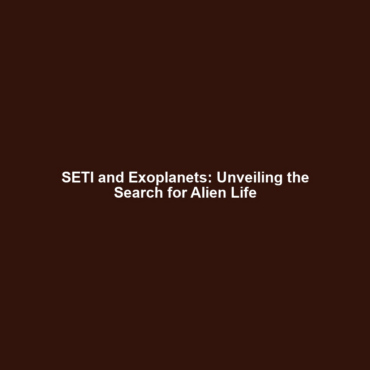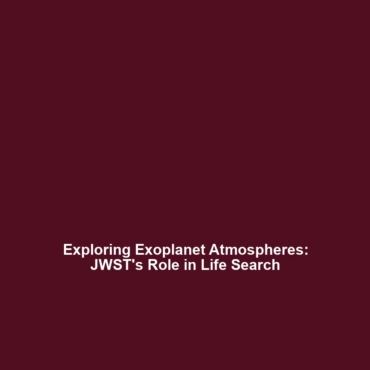SETI and Exoplanets: The Search for Extraterrestrial Intelligence
Introduction
The Search for Extraterrestrial Intelligence (SETI) represents humanity’s enduring quest to find life beyond Earth. As we discover more exoplanets—planets that orbit stars outside our solar system—we gain valuable insights into the conditions that may foster life. This article explores the intersection of SETI and exoplanets, highlighting their significance in the broader context of our search for extraterrestrial intelligence. The continued investigation into SETI and exoplanets not only expands our scientific understanding but also challenges our perspective on life itself.
Key Concepts
What is SETI?
SETI encompasses a variety of scientific efforts aimed at detecting signs of intelligent life in the universe. Using advanced technology, researchers scan the cosmos for signals or messages that could indicate extraterrestrial civilizations.
Understanding Exoplanets
Exoplanets are defined as any planets that exist outside our solar system. The discovery of these celestial bodies has transformed our understanding of planetary systems and their potential for hosting life. Key parameters considered in exoplanet research include:
- Orbital Zones: The ‘Goldilocks Zone’ is a region around a star where conditions could be just right for liquid water to exist.
- Planetary Composition: The atmosphere and surface conditions of an exoplanet are crucial in evaluating its habitability.
- Size and Mass: Earth-like characteristics in size and mass make certain exoplanets more likely candidates for life.
Applications and Real-World Uses
The implications of SETI and exoplanets extend beyond theoretical research into practical applications such as:
- Developing Communication Technologies: Enhancements in communication systems to detect and analyze signals from outer space.
- Astrobiology Research: Understanding the potential for life on exoplanets fuels innovations in biological sciences.
- Planetary Exploration: Missions to exoplanets enabled by advances in technology can provide insights into the nature of distant worlds.
Current Challenges
Addressing the challenges of SETI and exoplanets requires navigating several complex issues:
- Signal Interference: Natural cosmic noises can mask potential signals from intelligent sources.
- Resource Limitations: Funding and support for SETI research are often minimal, affecting the scope of projects.
- Technological Constraints: Current technology sometimes limits our ability to detect distant exoplanets effectively.
Future Research and Innovations
Future studies in SETI and exoplanets are poised for revolutionary changes. Potential innovations include:
- Advanced Telescopes: Next-generation telescopes like the James Webb Space Telescope can enhance our observational capabilities.
- Artificial Intelligence: AI is increasingly used in data analysis to identify patterns that may signify extraterrestrial signals.
- International Collaboration: Global partnerships among astronomers could provide more comprehensive data and increase detection rates.
Conclusion
In summary, the convergence of SETI and exoplanets offers invaluable insights into our search for extraterrestrial intelligence and the broader question of life beyond Earth. As we continue to develop innovative technologies and address existing challenges, the quest for understanding our universe will likely yield exciting discoveries. To stay updated on this ongoing research, consider exploring related topics such as recent exoplanet discoveries and SETI initiatives.


